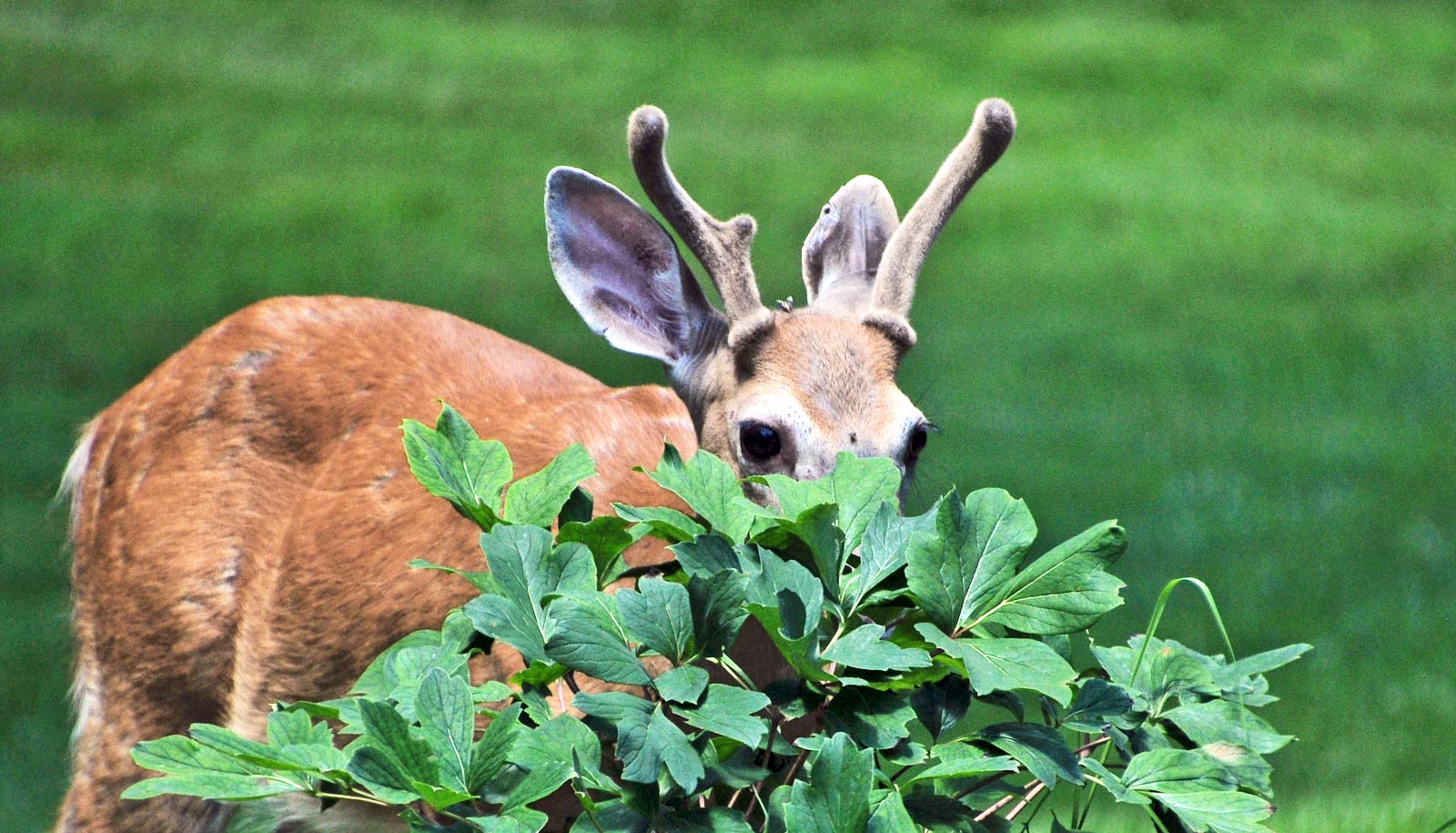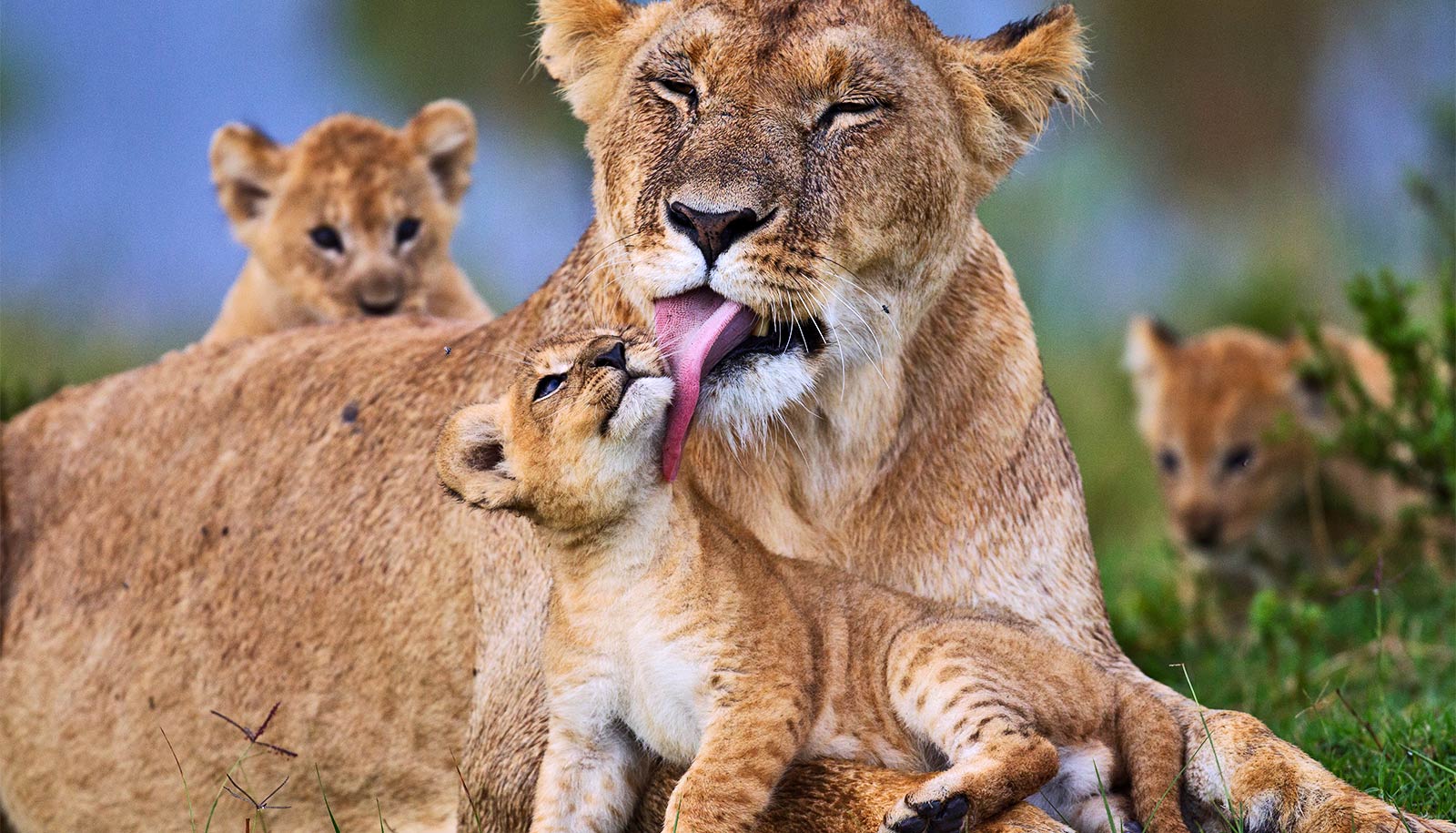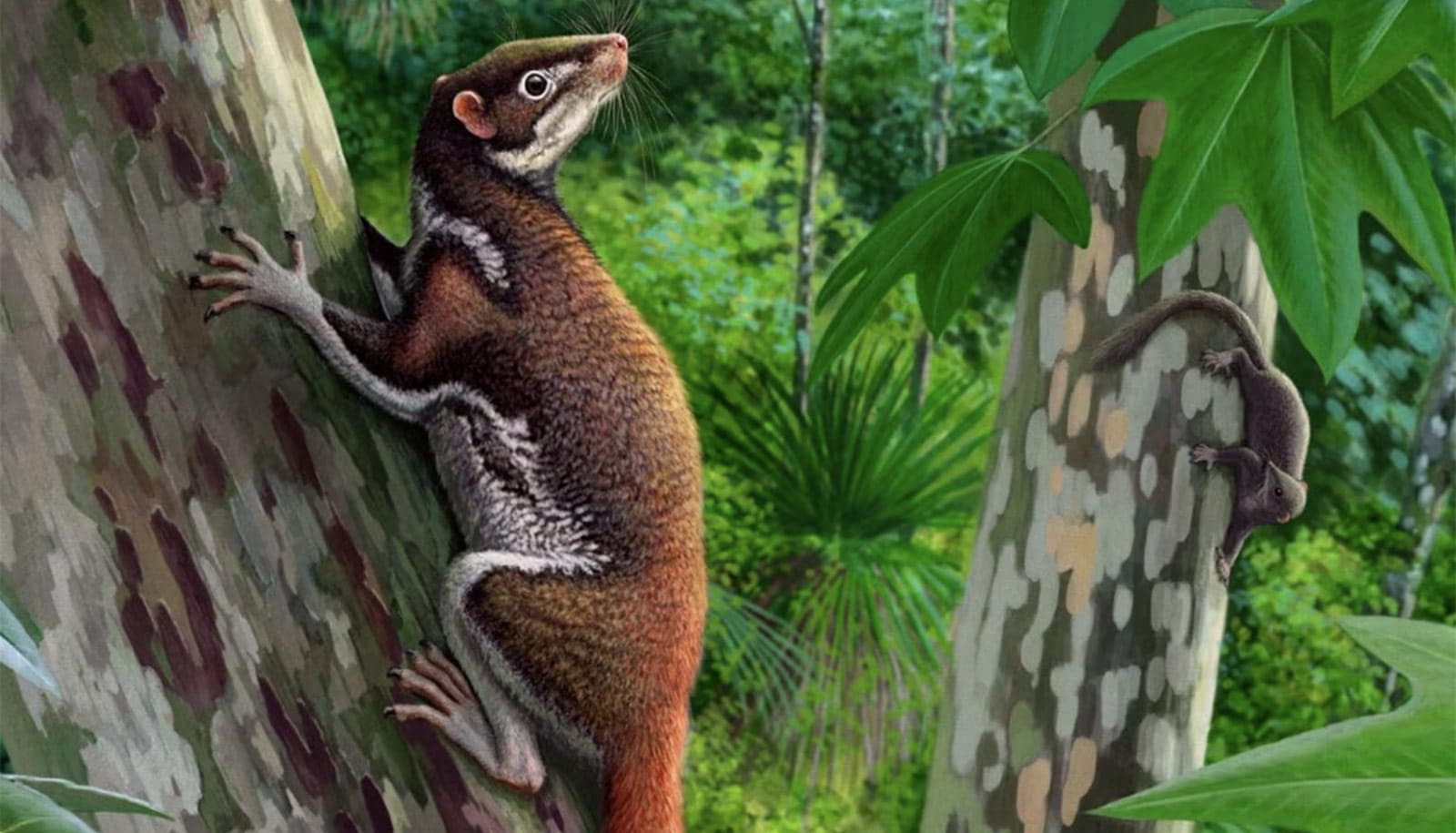On average, mammals move distances two to three times shorter in human-modified landscapes than they do in the wild, according to a new study.
One coauthor of the paper in Science, Penn State researcher Duane Diefenbach, has found that the home range of the average white-tailed deer in the big woods of Pennsylvania’s Northern Tier is more than twice as large as that of a deer in urban or agricultural areas of the state.
German researchers invited Diefenbach to contribute data to a worldwide study of mammal movement. Diefenbach has monitored the movement of dozens of deer fitted with global positioning system collars over the past five years as part of Penn State’s Deer-Forest Study.
“In Pennsylvania, we can go from contiguous forests to highly fragmented landscapes that are dominated by agriculture with small wood lots, and I noticed that when we had highly fragmented landscapes, home ranges of deer were much smaller—and the deer we studied in contiguous forest and undisturbed areas had larger home ranges,” says Diefenbach, director of the Pennsylvania Cooperative Fish and Wildlife Research Unit and adjunct professor of wildlife ecology in the College of Agricultural Sciences at Penn State.
“I attributed it to a couple of things. The fragmentation leads to many different types of plants available to deer so they do not have to travel as far in search of food. Also, people tend to live in areas with better-quality soil, because crops grow better, which also provides more food for deer.”
Diefenbach’s research has shown that in the big woods of Pennsylvania, the home range of male and female deer outside the breeding season is about a square mile. But in the agricultural areas, a deer’s home range is more likely to be half of a square-mile or even a third of a square-mile. In the rut, males generally have twice the home range size of females, he notes, but outside the breeding season they have essentially the same home range size.
Mammals around the world
Most mammals are on the move every day while searching for food, to find a mate, or to seek shelter. Some larger mammals, such as zebra, generally move longer distances, while smaller mammals, such as hares, usually cover shorter distances.
“Our study looks at everything from hares to wild boars to elephants.”
Lead researcher Marlee Tucker, a biologist with Senckenberg Biodiversity and Climate Research Centre and Goethe University Frankfurt, has shown that the extent of these movements is significantly reduced in human-modified areas. In these areas, mammals move distances that are only half to one third of what they cover in more natural areas.
Tucker and 114 coauthors from various institutions collated movement data from 803 individuals across 57 mammal species from around the globe. To do this they used the data portal, Movebank, which archives movement data from researchers worldwide.
“Our study looks at everything from hares to wild boars to elephants,” Tucker says. “The scientists in our team equipped individual animals with a GPS tracking device that recorded each animal’s location every hour for a period of at least two months.”
The researchers then compared these data to the Human Footprint Index of the areas where the animals were moving. The index measures how much an area has been changed by human activities such as infrastructure, settlements, or agriculture.
Roads and other boundaries
In Pennsylvania, Diefenbach has seen the effect that human-built structures such as roads and pipelines have on both deer home ranges and movement. Deer tend to avoid areas where there are few roads, he explains, but in areas with a high density of roads, that behavior flips and they are actually more likely to be associated with roads and spend time along them.
“I can’t explain why they have shown that pattern,” he says. “When yearling deer disperse from where they were born, we know they are less likely to cross a busy highway and they are more likely to disperse away from a busy highway. We know that when they set up home ranges, things like roads, pipelines, streams, and physical changes in the landscape will help define the boundaries of where they spend their time, their home range.
As female deer wander, fatal disease goes with them
“So when humans build roads and pipelines, animals will naturally use those landscape features as boundaries of their home range,” which may be another reason why deer home ranges are smaller in fragmented landscapes.
The Robert Bosch Foundation and the Minerva Center for Movement Ecology supported the work. The Pennsylvania Game Commission, the Pennsylvania Department of Conservation, and Natural Resources’ Bureau of Forestry, and the US Geological Survey fund Diefenbach’s forest-deer study.
Source: Penn State



